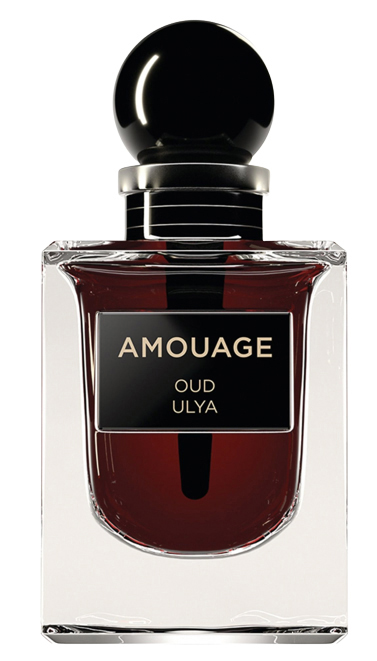
Ode To Oud: Demi Rawling On How The Scent Represents Memories, Emotions and Culture In The Middle East
Demi Rawling, Harper’s Bazaar Arabia’s perfume expert, explores why the region finds the lingering aroma of oud so scent-sational
When I moved to Dubai over two years ago, I was immediately captivated by all the smells surrounding me. I remember stepping out of the airport for the first time, and being hit with an intense aroma, similar to the smell of a rose and oud perfume – I was immediately hooked. I have known about oud for over five years but my curiosity was further piqued after moving to the Middle East as it is an ingredient that is much more prevalent here. I wanted to understand what creates this desire for oud in the region.
Oud, or agarwood, is produced by the Aquilaria tree, which is mainly found in Thailand, Laos, Myanmar, Vietnam and India. When the inside of the tree becomes infected – usually by insects, fungus or mould, the tree defends itself by producing this rare type of resin. Supplementing the market today are modern plantations that infect their trees artificially in the hope of obtaining the precious resin, although some experts say the result of this method is no comparison to that of the ancient trees that produce oud naturally.

Oud is an intrinsic part of this region’s culture. Wood chips are often burned to purify clothes; it is gifted to show love and appreciation; it is ignited in homes to welcome guests; and often included as a part of prayer rituals. Oud is not just another scent for those in the Middle East, it represents memories, emotions and culture.
Oud has been a trending note used in western perfumery for over a decade, although most brands don’t reveal the fact that not even a single drop of real oud is used in their products, seemingly because of its price – which exceeds that of gold. Instead, they tend to lean on reconstitutions or accords composed with other woody notes, and call it oud. It’s also interesting to note that when it comes to this scent, westerners tend to wear it in a more formal setting whereas regionally it seems to be used at home too, to give a sense of comfort.

I’m still learning to appreciate this scent, and hoping it will continue to grow on me. But for now I prefer a more subdued version combined with other notes to soften the composition.
For those looking for recommendations – both old school oud connoisseurs and those who desire a more approachable fragrance – I have recently discovered an attar (or oil) that left me speechless. Oud Ulya from Amouage, created by perfumer Cécile Zarokian, was recently launched as part of the brand’s new Attar collection. The scent is raw, dark, seductive and utterly magical. It is composed using the most spectacular quality of oud coming all the way from Assam, India; supposedly the top tier of all the world’s varieties. The attar was blended with birch to enhance the smokiness, and vanilla to bring an intimate sweetness. If you are in the market for a high quality oud attar, this one is worth a look.

Let’s flip the page to something equally as beautiful but completely different – Mizensir Perfect Oud from Master Perfumer Alberto Morillas. Athough it doesn’t contain a drop of real oud, but rather an ‘oud’ accord, it’s still one of my favourite fragrances. Alberto Morillas is known as one of the greatest perfumers of all time. He is especially skilled at playing with synthetic molecules and Perfect Oud is a great example of that. I believe it’s the cleanest ‘oud’ fragrance I’ve ever smelled. It features a very fresh, aromatic opening and a slight leathery and smoky dry down. But overall it maintains a very clean feel throughout its wear. It’s a well-rounded, formal fragrance and definitely a great option for someone wanting to start wearing this note.
Oud Satin Mood from Maison Francis Kurkdjian is a fan favourite from the Oud Mood collection; I am a devotee too. This scent has a sweeter take than those I mentioned previously. It does a beautiful dance between rose and oud; leaning slightly powdery due to the violet then heading in a sweeter direction thanks to notes of vanilla and benzoin. It’s a must try for anyone who relishes a delicious, ambery rose and oud olfactory combination.

But the first fragrance featuring this note that I fell in love with was Lancôme’s Oud Bouquet. I remember it was quite an eye-opening experience for me as it has a very gourmand personality. It grew to become one of my most recommended fragrances, influencing many of my followers to try it out. It does share some familiarities with Maison Francis Kurkdjian’s Oud Satin Mood, but I would say this has a much sweeter and woodier interpretation. Rose is still noticeable although it takes more of a back seat in the composition. A follower of mine once described it to me a evoking the memory of sitting around a campfire, toasting s’mores with the family, and I’d say that is a pretty spot-on description.
Ever since I started learning more about the history and cultural significance of oud, my appreciation for the raw material has evolved. For some, oud is just a stinky wood. But for others, oud speaks to the feelings of comfort, love and often childhood memories. I’m not sure if I’ll ever catch myself wearing pure oud oils but count on me reaching for my oud fragrances more often to feel a part of something bigger than just wearing another pretty scent.
Lead image from Harper’s Bazaar Arabia’s April 2022 issue.
